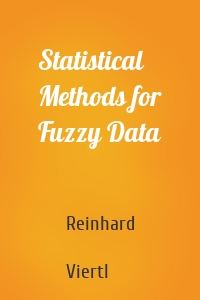Reinhard Viertl
1 кн.
Statistical Methods for Fuzzy Data
Statistical data are not always precise numbers, or vectors, or categories. Real data are frequently what is called fuzzy. Examples where this fuzziness is obvious are quality of life data, environmental, biological, medical, sociological and economics data. Also the results of measurements can be best described by using fuzzy numbers and fuzzy vectors respectively. Statistical analysis methods have to be adapted for the analysis of fuzzy data. In this book, the foundations of the description of...
| Автор | Reinhard Viertl |


